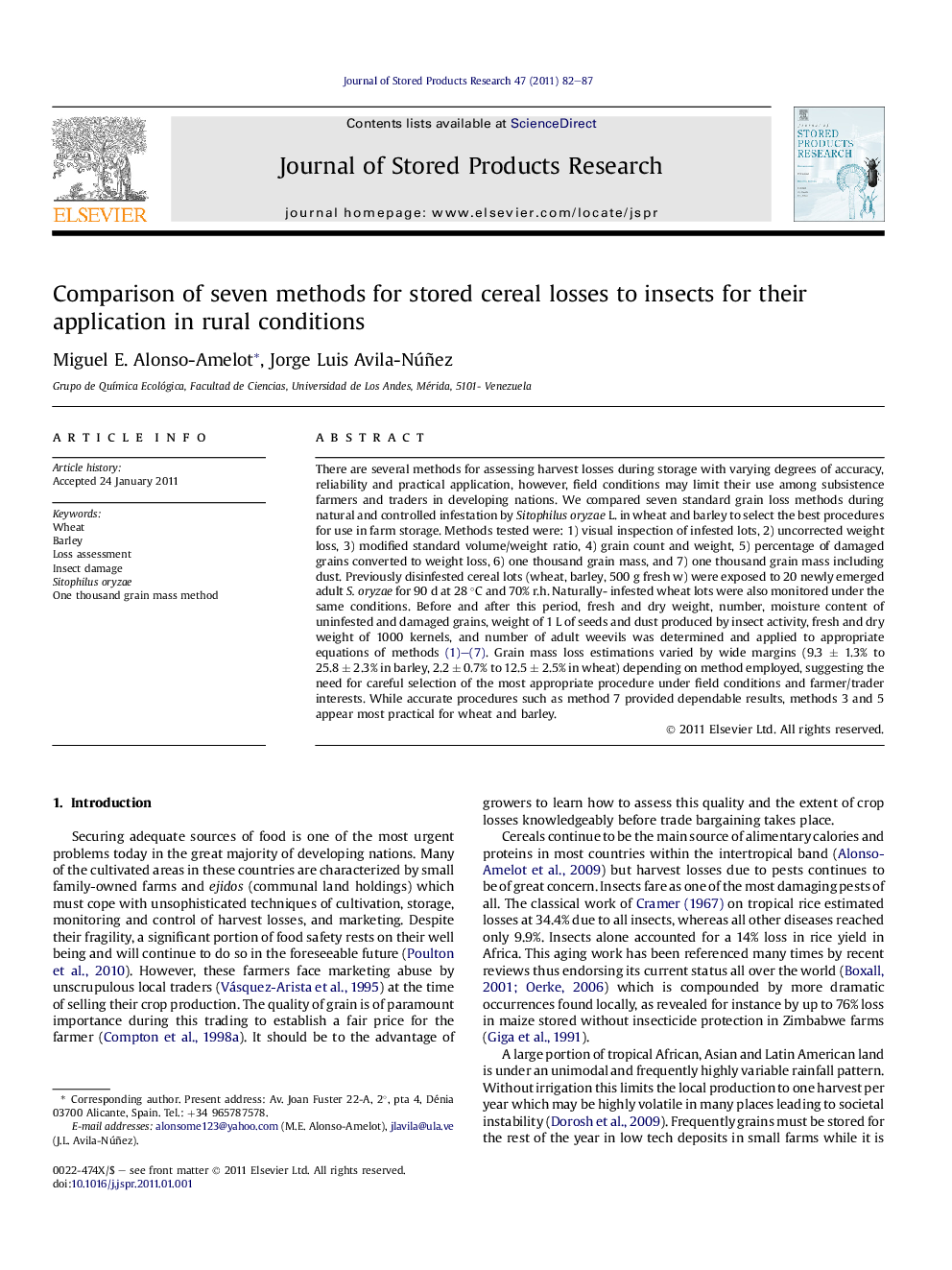| Article ID | Journal | Published Year | Pages | File Type |
|---|---|---|---|---|
| 4517258 | Journal of Stored Products Research | 2011 | 6 Pages |
There are several methods for assessing harvest losses during storage with varying degrees of accuracy, reliability and practical application, however, field conditions may limit their use among subsistence farmers and traders in developing nations. We compared seven standard grain loss methods during natural and controlled infestation by Sitophilus oryzae L. in wheat and barley to select the best procedures for use in farm storage. Methods tested were: 1) visual inspection of infested lots, 2) uncorrected weight loss, 3) modified standard volume/weight ratio, 4) grain count and weight, 5) percentage of damaged grains converted to weight loss, 6) one thousand grain mass, and 7) one thousand grain mass including dust. Previously disinfested cereal lots (wheat, barley, 500 g fresh w) were exposed to 20 newly emerged adult S. oryzae for 90 d at 28 °C and 70% r.h. Naturally- infested wheat lots were also monitored under the same conditions. Before and after this period, fresh and dry weight, number, moisture content of uninfested and damaged grains, weight of 1 L of seeds and dust produced by insect activity, fresh and dry weight of 1000 kernels, and number of adult weevils was determined and applied to appropriate equations of methods (1), (2), (3), (4), (5), (6) and (7). Grain mass loss estimations varied by wide margins (9.3 ± 1.3% to 25.8 ± 2.3% in barley, 2.2 ± 0.7% to 12.5 ± 2.5% in wheat) depending on method employed, suggesting the need for careful selection of the most appropriate procedure under field conditions and farmer/trader interests. While accurate procedures such as method 7 provided dependable results, methods 3 and 5 appear most practical for wheat and barley.
► Wheat natural weevil infestation gave 9.5% dry weight loss in 3 months. ► Seven grain loss methods in wheat gave varying results, but more consistent in barley. ► Grain visual inspection gave over 2.5 times more losses than the TGM method. ► Grain count and weight yielded the lowest loss in wheat but not in barley. ► All but visual appraisal and uncorrected weight loss gave similar results in barley
